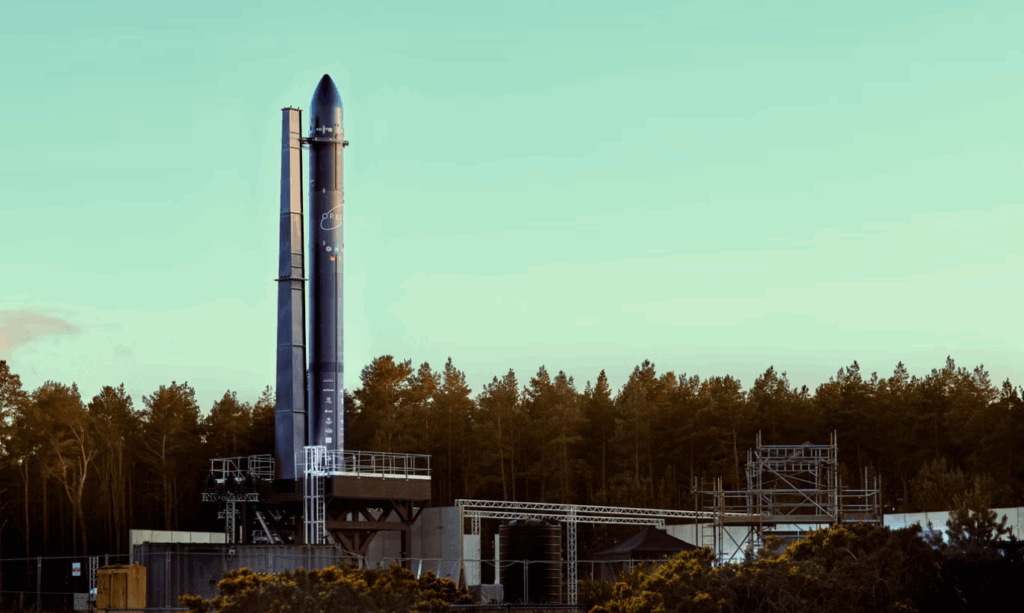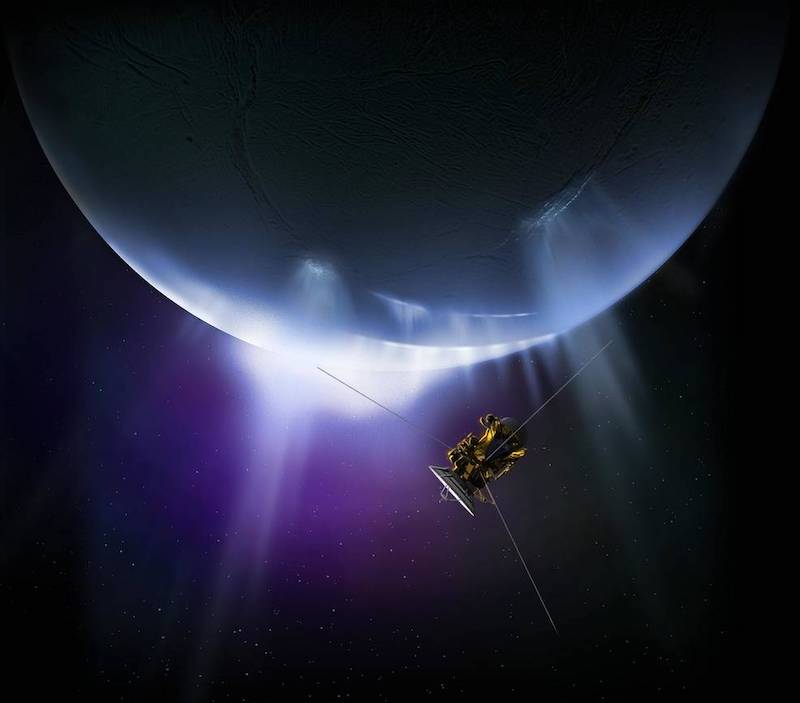Now Reading: ESA actively monitoring severe space weather event
-
01
ESA actively monitoring severe space weather event
ESA actively monitoring severe space weather event


12/11/2025
468 views
5 likes
In brief
On 11 November 2025, an intense solar flare was observed, with a peak around 10:04 UTC. This was followed less than an hour later with the observation of a coronal mass ejection (CME), with an initial speed estimated to be around 1500 km/s and arriving at Earth on 12 November in the late evening or on 13 November in the early morning, although these estimates include some uncertainty.
The impact of the resulting geomagnetic storm is estimated to be severe and might affect satellites, power grids, and navigation systems. The event does not pose a direct biological risk to people on Earth.
The European Space Agency (ESA) is closely monitoring this powerful space weather event and is collecting detailed information from all its expert service centres. The following description is based on the information currently available and might be subject to change.
This page was last updated on 12 November 2025, at 14:00 CET.
In-depth
Three space weather events back-to-back
Activity on the surface of the Sun generates space weather that spreads outwards, across the Solar System. Earlier this week, two strong, X-type solar flares have been observed from the same solar active region (NOAA Active Region 14274) and have generated two CMEs that arrived at Earth this morning triggering a severe geomagnetic storm of intensity G4.
On 11 November, a more powerful, X5.1-class solar flare was observed, with a peak around 10:04 UTC. Following the flare, shock waves have been observed on the solar surface radiating away from the active region.
This was followed less than an hour later with the observation of a CME by SOHO’s LASCO and GOES-19’s CCOR-1 coronagraphs. Our initial observations show an initial speed of around 1500 km/s, with an estimated arrival to Earth on 12 November in the evening, or on 13 November in the early morning although these estimates include some uncertainty.
Estimated impact
Major solar flares of this type are known to impact radio communication and satellite navigation applications (GNSS) in the regions facing the Sun when the event occurs. For this event, those regions Europe, Africa, and Asia.
“Our planet was hit by two consecutive CMEs last night triggering a severe geomagnetic disturbance. We are expecting a third one to arrive later today or tomorrow. The impact of the third CME heavily depends on whether it merges with the first two or not,” says Juha-Pekka Luntama, Head of ESA Space Weather Office.
“The geomagnetic storm is estimated to continue at severe level, and it may impact satellites, power grids, and navigation systems. We have observations of further CMEs erupting from the Sun, so severe space weather activity is foreseen to continue for second half of this week.”
While these effects are concerning for technology, they do not pose a direct biological risk to people on Earth thanks to our planet’s protective atmosphere and magnetosphere.
New projects to fine-tune estimations
Big solar storms are common so close to solar maximum. Although it is possible to forecast the probability of an eruption, the exact moment of the event – when the elastic band snaps – and the precise magnitude are still difficult to predict.
The big active areas on the Sun’s surface are closely monitored at all times and ESA maintains a host of space weather services used by industry and spacecraft operators to be able to respond quickly to a space weather event.
The bottleneck of information has been the estimation of the time of arrival of the CME and that of the severity of the resulting geomagnetic storm. To reduce these forecast uncertainties, ESA is developing a set of new missions.
ESA’s Vigil mission will pioneer a revolutionary approach by observing the ‘side’ of the Sun from Lagrange Point 5 in deep space, unlocking continuous insights into solar activity. To be launched in 2031, Vigil will detect potentially hazardous solar events before they come into view as seen from Earth, giving us advance knowledge of its specificities and offering invaluable time to protect spacecraft and ground infrastructure.
Current in-situ measurements of solar flair and CME are done from Lagrange Point 1 (L1) and allow us to predict the impact of this solar storm only about 20 minutes before impact. Located more than 15 million kilometres from Earth, approximately ten times further away than L1, the proposed Shield mission would be able to give an alert of his storm around two hours and a half before impact, which would allow critical infrastructure operators to efficiently prepare and minimise geomagnetic storm impacts.
About solar storms
During a solar storm, the Sun can follow the following sequence of events, although not all the elements are apparent every time.
When a solar flare erupts, the explosion can release as much energy as a billion atomic bombs. A torrent of electromagnetic waves leaves the Sun at the speed of light and arrives at Earth eight minutes later potentially disrupting short-wave radio transmissions and causing errors in navigation systems.
Following on, a fraction of an hour behind, are high-speed solar energetic particles including protons, electrons, and alpha particles. This radiation can harm astronauts, damage spacecraft and can produce a cascade of secondary particles in our atmosphere that could cause errors in electronic components if they reach the ground.
A flare is often accompanied by a large eruption of ionised gas from the Sun’s outer atmosphere, known as a coronal mass ejection (CME). A CME creates gusts and shock waves in the solar wind, which, if heading towards Earth, can take anything from 18 hours to a few days to reach us.
When a CME arrives at Earth, it stresses its magnetic field, causing a geomagnetic storm. This makes compass needles wander and can lead to damaging surges of electrical current in long metallic structures such as power lines and pipelines. During geomagnetic storms, particles from space find paths to the upper atmosphere, where they collide with atoms and molecules, creating auroras.
The currents injected into the atmosphere not only produce light but can also heat Earth’s upper atmosphere, making it swell and increasing its drag on low-altitude satellites. If a satellite does not compensate by using its thrusters, it can be dragged out of orbit. This effect also has a positive side, as it helps to drag space debris down into the atmosphere, where it burns up.
Stay Informed With the Latest & Most Important News
Previous Post
Next Post
-
 012024 in Review: Highlights from NASA in Silicon Valley
012024 in Review: Highlights from NASA in Silicon Valley -
 02Panasonic Leica Summilux DG 15mm f/1.7 ASPH review
02Panasonic Leica Summilux DG 15mm f/1.7 ASPH review -
 03How New NASA, India Earth Satellite NISAR Will See Earth
03How New NASA, India Earth Satellite NISAR Will See Earth -
 04And Thus Begins A New Year For Life On Earth
04And Thus Begins A New Year For Life On Earth -
 05Astronomy Activation Ambassadors: A New Era
05Astronomy Activation Ambassadors: A New Era -
06SpaceX launch surge helps set new global launch record in 2024
-
 07From Polymerization-Enabled Folding and Assembly to Chemical Evolution: Key Processes for Emergence of Functional Polymers in the Origin of Life
07From Polymerization-Enabled Folding and Assembly to Chemical Evolution: Key Processes for Emergence of Functional Polymers in the Origin of Life




















